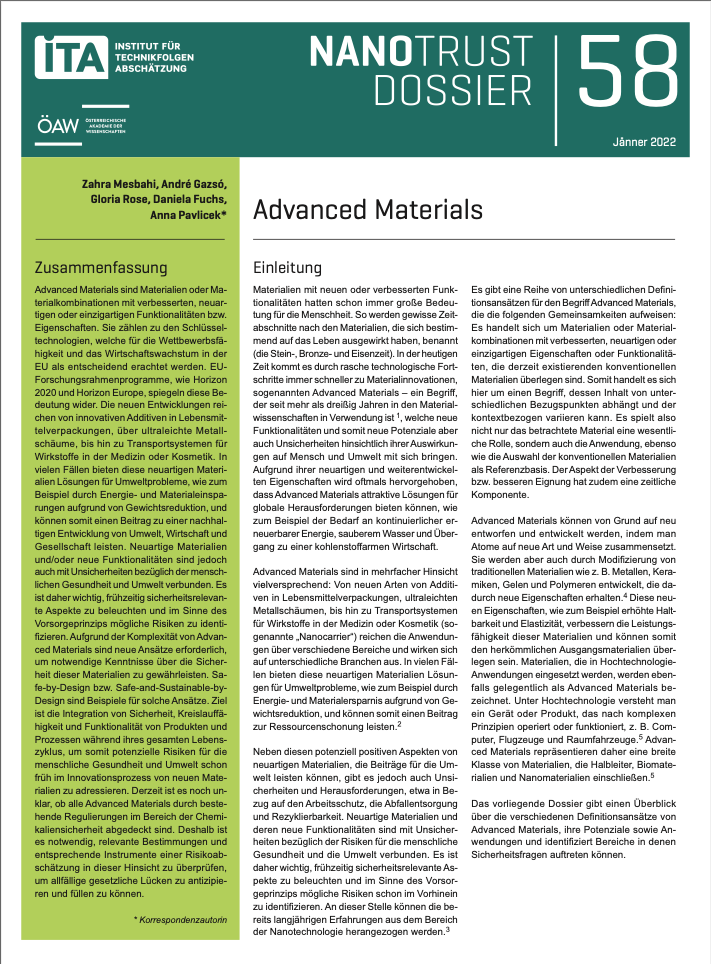
ITA Nanotrust Dossiers, pp. , 2025/03/17

Innovative chemicals and materials, such as advanced materials, are increasingly used in various applications. Advanced materials, like nanomaterials or biopolymers pose new challenges for established safety and risk assessments because of their unique properties, such as their size, shape, and surface characteristics, that distinguish them from conventional materials. In recent years, concepts such as “Safe by Design” (SbD) have been developed for nanomaterials to integrate safety aspects into the early stages of design and development. This concept has been further developed, extended to other advanced materials and chemicals in general, and expanded to include the aspect of sustainability in form of “Safe and Sustainable by Design” (SSbD). In 2022, the European Commission’s Joint Research Centre (JRC) presented a framework for safety and sustainability assessment aimed at helping to achieve the ambitious goals of the European Green Deal and the Chemical Strategy for Sustainability (CSS). The SSbD framework is intended to help companies and organisations assess not only safety but also environmental and socioeconomic sustainability, ensuring these factors are considered when (re)designing chemicals and materials. Application of the SSbD concept is currently voluntary. Because of the concept’s complexity and frequent lack of data, practical implementation remains a significant challenge for manufacturers. To effectively promote adoption of the SSbD concept, particularly amongst small and medium-sized enterprises (SMEs), appropriate framework conditions and additional measures to develop competence, cooperation, coordination, and support are needed.